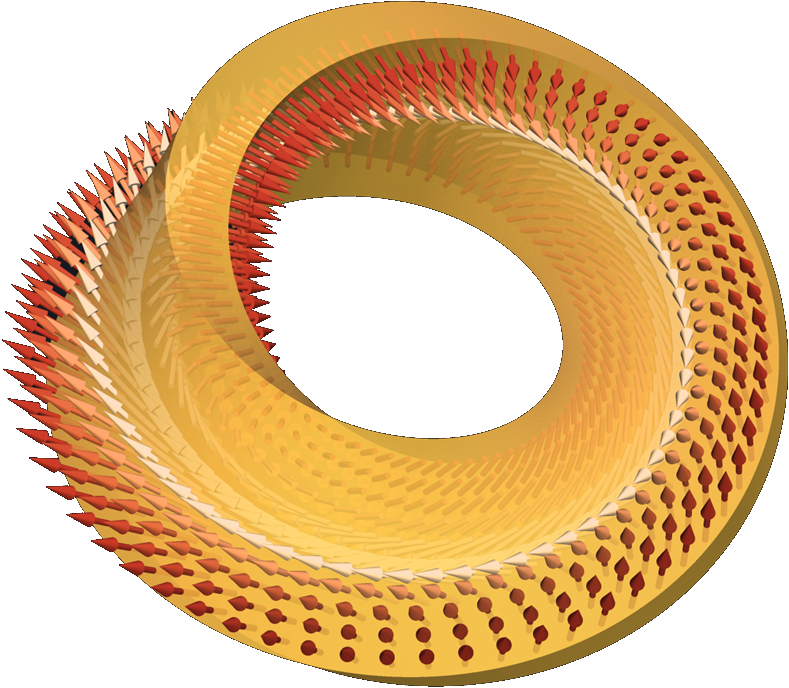Speaker
Description
Extending 2D structures into the third dimension has become a general trend in various areas, including photonics, plasmonics and magnetics. This approach provides a means to modify conventional and to launch novel functionalities by tailoring vector potentials inducing anisotropic and chiral effects. Recently, there has been significant progress [1] in the fabrication of free-standing ferromagnetic and superconducting nanostructures by focused particle direct-write techniques, as in part reviewed in [2]. In this respect, 3D shell structures such as framed tubes, spheres, Swiss rolls and helices are especially interesting as they offer unprecedented prospects for nanomagnetism [3] and superconductivity [$4$] because of topology and geometry-controlled effects. Namely, in magnetism, curvilinear geometry brings about two exchange driven interactions - effective anisotropy and antisymmetric vector exchange, i.e. an effective Dzyaloshinskii-Moriya interaction. In addition, another magneto-chiral contribution emerges due to the dipole-dipole interaction. In the case of superconducting nanostructures, the combination of low-dimensionality with a curvilinear geometry allows in principle for the observation of topology-driven effects, such as unconventional phase slips, reversible and irreversible switching, fractional flux-flow instabilities, and the Berezinskii-Kosterlitz-Thouless transition.
In my talk, I will introduce focused ion and electron beam-induced deposition, FIBID and FEBID, respectively, as direct-write techniques suitable for the fabrication of free-standing 3D nanoarchitectures with a resolution in the sub-nm range vertically and 10-20 nm laterally. Next, I will dwell on selected proof-of-concept experiments, technological limitations, and future prospects of using 3D hybrid ferromagnet / superconductor structures with pre-defined shape and curvature in such research areas as microwave engineering [5], superconducting spintronics [6], magnon fluxonics [7], as well as graded-refractive-index spin-wave nano-optics [8].
This work was conducted within the framework of the Actions CM1301 "Chemistry for electron-induced nanofabrication" (CELINA) and CA16218 "Nanoscale coherent hybrid devices for superconducting Quantum technologies" (NANOCOHYBRI) of the European Cooperation in Science and Technology (e-COST).
[1] L. Keller et al., Direct-write of free-form building blocks for artificial magnetic 3D lattices, Sci. Rep. 8 (2018) 6160.
[2] M. Huth, F. Porrati, O. V. Dobrovolskiy, FEBID meets materials science, Microelectron. Engin. 185-186 (2018) 9.
[3] R. Streubel et al., Magnetism in curved geometries, J. Phys. D: Appl. Phys. 49 (2016) 363001.
[4] S. Lösch et al., Microwave radiation detection with an ultra-thin and free standing superconducting niobium nano-helix, ACS Nano (2019).
[5] O. V. Dobrovolskiy et al., Microwave emission from superconducting vortices in Mo/Si superlattices, Nat. Comms. 9, 4927 (2018).
[6] K.-R. Jeon et al., Enhanced spin pumping into superconductors provides evidence for superconducting pure spin currents, Nat. Mater. 17 (2018) 499.
[7] O. V. Dobrovolskiy et al., Magnon-Fluxon interaction in a ferromagnet/superconductor heterostructure, Nat. Phys. (2019).
[8] C. S. Davies et al. Towards graded-index magnonics Phys. Rev. B 92 (2015) 020408.

